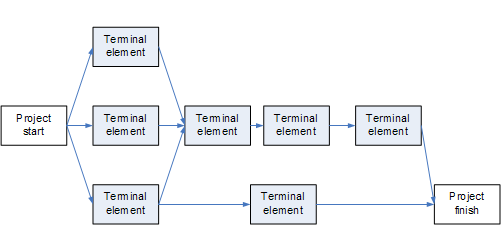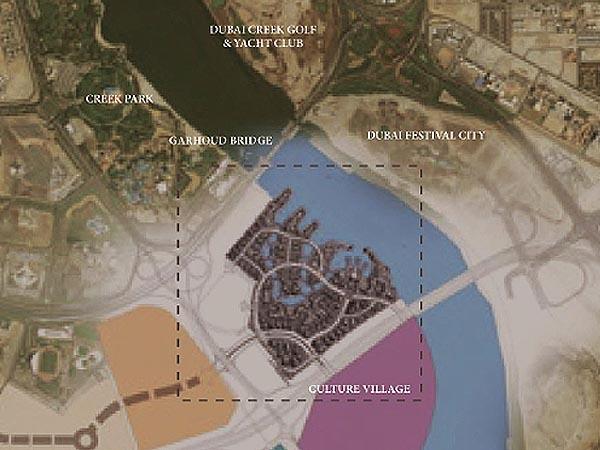Definition of Agile Project Management
Agile project management is an incremental approach to project management that that managers use to implement project activities at the design, development, implementation, and maintenance phases and has been used of software products and building construction activities (Chin, 2004). The concept differs from the traditional project management methods in many ways. Traditional project management methods are characterised by scope, time, and cost functionalities. On the other hand, agile project management methods use the cost function as an important tool to determine how to recruit people into the project and the tools to use in project execution. In addition, the project agile project management is characterised by a scope definition that is used to determine how the project scope is spread, project quality requirements and functionalities, and in ensuring management processes that positively add the dimensions of business value into the project. Agile development is defined by the customer’s business requirements that include functional and nonfunctional requirements, transitional requirements, and stakeholder requirements. The customer provides their requirements to the project manager who ensures efficient planning and allocation of resources, effective planning and organisation of project teams, and coordination of all the functional components of the project to achieve the desired project goals and objectives (Chin, 2004).
Agile project management focuses on people, value, quality, effective processes, desirable product functionality, and the completion of projects on time. The overall definition and meaning of agile project management is to provide value that enables the project manager to introduce and integrate new ideas in real time or when required, integrate the element of value mapping into the project, provide constant feedback to the customer, frequently deliver project products, and use value streams to execute the agile project.
Aims and Agile Meaning in Project Management
The aim of using the agile project management methods is to ensure that construction projects such as buildings are competed within schedule using available resources including people, tools, time and money. The main objective is to focus on the customer’s project requirements specifications, needs, and expectations by establishing intense communication and collaboration between the customer and the project team, delivering functional products in incremental stages according to the expectations of the customer using small collaborative teams (Augustine, 2005). It is important for the manager of the agile development process to ensure that strong collaboration exists between the small project development teams to enable each member on the project team to continuously learn and adapt to new changes that occur in each project development phase. It is important for the project manager to understand how agile project management methods are used for successful execution of the projected. Studies show that agile project management methods are applied on projects that require complex knowledge and skill to complete as has happened in software development and in the construction industry. The agile management method is applied on areas where the requirements of the project are not clearly understood or known in domains that dynamically change with changing market requirements (Augustine, 2005).
Characteristics of Agile Construction
Augustine (2005) describes agile project management techniques as those that enable the product developers to supply the customer with the product at an earlier stage to satisfy their need while continuously updating the product to meet the needs and expectations of the customers. The agile project management practices enable the projects to accommodate new changes to the customer requirements that are introduced at any stage in the development life cycle while ensuring that the working product is delivered as earlier as possible to the customer. The aim of the agile project management method is to satisfy the customer’s needs and expectations, deliver the product frequently, welcome changes, motivate the workers, maintain and excel in product quality, keep the product and the process as simple as possible, measure the product quality metrics, embrace and work as a team, get self-reorganized, and ensure that the construction work or product development is sustainable.
Guiding Vision
The project manager has the sole responsibility of foreseeing new changes that might be introduced into the development process and to determine the best solutions to adopt when the changes are introduced. The objective is to ensure that the vision is understood by all members of the project team and the stakeholders that is achieved by creating a mental model of the changes introduced into the project (Chin, 2004). Once the changes have been identified by the project manager and translated into simple statements that are understood by each project team member, the information is made available to each team member by communicating to each of them using open communication channels to all the team members. The information is communicated clearly to enable the members to develop a shared vision of the project requirements. The shared vision provides directions for the team members because they are able to evaluate the vision and make changes that might be necessary for the project. The common vision that makes all the members of the team to proactively get involved in decision making without the presence of the team leaders or the project manager is defined by the product vision, the team vision, and project vision (Chin, 2004).
Team Dynamics
Chin (2004) describes the agile development process as consisting of small and manageable teams that functions on the CAS model. The teams are always kept small and sustainable to make them governable and each team member is required to make contributions to the product development process. In addition, the teams are made small to ensure that they can be easily integrated into the larger team that makes the entire project team and to ensure ease of collaboration between the team members and the organisation under the project manager.
Team work is actively encouraged, the diversification of roles is encouraged, specialization among the team members is also encouraged, and skills development is allowed and encouraged within the teams. In addition, the teams do not operate on rigid rules, but each team member is encouraged to leave or join the team on their own and the strategy is used to encourage new members with better skills and expertise to join the team. The overall benefits are better working relationship among the team members and positive contributions of new skills from the new members who join the teams. Open communication is encouraged and used because it provides members with the ability to establish constant touch with the internal and external environments (Chin, 2004). Problems that include conflicts between the team members are discouraged and smaller working teams are encouraged because they work to deliver the results of the larger team.
It is important to assess the readiness of the team to determine the ability of the team members to make decisions that are independent and geared towards the project objectives. The assessment includes the capability and skills of the team members and their commitment to project goals, ability to communicate properly, ability to solve problems, and the knowledge and experience of the team members.
Agile Project Management Style
The management style for agile development is based on the light touch management principle. The principle operates on the fact that project team should be managed with intelligence based on directions provided by a leader with excellent leadership and management style. The underlying concept is emergent leadership and provision of orders. Here, the key issues of team control are implemented without sacrificing the principles of customer focus and value. The leadership style allows the team members to work with flexibility and autonomy without adversely impacting on the performance of the team (Chin, 2004).
The key implications are to establish decentralized control that is not dependent on one person, but an all-inclusive process. In the context of the decision making process, the decentralized mechanism allows for a decision making process that factors the contributions of each team member to allow the team members to contribute their unique strengths and abilities into the decision making process. In addition, each member focuses on their strengths while the weaknesses are no focused on.
Simple Rules
The main objective of the agile development management process is to deliver projects to the customers that have business value. To deliver products with the desired business value the measures should be consistent with the needs and expectations of the customers and the teams work using the rules by focusing their efforts towards the delivery of business value to the customers. The rules under which the teams work are defined by simplicity, straightforwardness, adaptability, positive team behaviour, support for decision making, and customer focus (Chin, 2004). The teams use the rules to assess the environment to understand and determine the factors that might hinder their performance and remove them to ensure business continuity is upheld by the team members in the delivery of products that focus on customer value.
The rules are applied on a continuous process by ensuing that each team member is disciplined and adheres to the rules for the execution of project tasks.
Open Information
Another characterizing factor of agile development that is applied in the planning phase of the project management life cycle is open information. Open information is a requirement that dictates that each channel of communication that exists within the project is open for the team members to candidly share their ideas.
The key implications of open communication are to enable the project manager to reorganize the team under their leadership according to the agile project management methods and practices. In addition, open channels helps to reduce the time spent for information sharing and assures the project teams of a structured approach to sharing information among the teams.
Adaptive Leadership
Agile teams function under a project manager who provides visionary leadership in planning and directing the teams to work towards the fulfillment of the project goals and objectives. The leadership strategy is to create small organic teams that operate on simple rules and allow for mutual communication in the sharing of information and ideas among the team members.
Here, the responsibilities of the project manager are to ensure that the agile project team’s values and practices are upheld, ensuring that impediments towards the fulfillment of project goals and objectives are addressed, scheduling meetings to discuss the short term and long term goals and objectives and how to drive the teams towards achieving them, provide enhanced project management tools and practices, motivating the team members to work towards the success of the project, encouraging effective communication between team members, and ensuring that the team members understand the project development requirements and implement them according to the requirements specifications.
In the leadership phase, the project team leader directs the team based on the CAS model. The model dictates that the agents who work for the project team must maintain internal models of the expected behavior of team members and ensure that the skills of each team member are tapped to create a large pool of expertise. In addition, each element in the team that makes positive contributions to the execution of tasks are tagged to enable easy identification and organisation. The team leader who is also the project manager ensures that strategies are formulated to enable stronger cooperation and avoid competition among the team members.
According to the model, feedback is used as a means of sharing ideas, conflict resolutions, and the creation of an environment that fosters the application of strategic rules, aggregation of tasks, and the bottom up manifestation of project execution order.
Planning in Agile Project Management
In the planning phase, many agile project management strategies work by first defining the project scope as the most fundamental and critical step of the planning process. In addition, the scope provides the best tools, resources, tasks, and the work breakdown structure that is necessary for the successful execution and completion of the project. In addition, the resources and time schedule are used to define the processes, workloads, and the teams necessary for the completion of the project. Studies describe the processes as being defined by the logical connection and inter-dependencies of project tasks that are shown on an activity diagram that shows how one activity leads to the next. The task or activity inter-dependencies enable the project team manager to calculate the critical path of the project management process.
The agile project plan always evolves into the strategic plan, concept definition; risk planning, project start up, project performance, and project close out plan. The work breakdown structure details the cost estimates, activity definition, risk management plan, resource plans, and cost budgeting. On the other hand, the inputs to scope definition include the scope statement, project execution constraints, historical information, output plans, and the assumptions made. Other typical elements in the project life cycle include project concept paper, project sponsor ID, schedule requirements, cost benefit analysis, cost constraints, technology assessment, and tailoring of the project methodology in the domain of concept definition. Other domains include risk planning ID. In the risk domain, the statement of work to be done defines the tasks to be executed, project timeframes, technical quotations, and resource and task identifications.
Project Network Diagram
The project network diagram provides the managers with the ability to discern the logical link or connection between different activities as illustrated in the diagram below. The diagrams show the logical relationships or inter-dependencies between the project activities from start to finish.

Scope definition
In the scope definition phase, all project activities are identified and listed down. The scope is defined by starting from the broad to specific products to be delivered. The elements that are within the scope and those that are outside of the scope are defined to determine those elements that fall under the current project area. In this phase, the project objectives are well defined and products to be delivered are defined at each phase. It is at the scope definition step that the high level scope statement is written that provides direction on what should be done. To be successful in defining the project scope, each deliverable is identified against the project objective and a document is prepared for the elements identified to be within the scope and out of scope. The process allows for a clear definition of the project scope. The scope document consists of elements that include blueprints, technical specifications, plans, project specifications, and drawings. The scope statement must be defined by project justification that is based on the business needs, the products to be delivered expected from the project, and the project objectives.
Scope management
The project manager documents all the necessary details for product products to be delivered and the processes that are required to meet the product development requirements. The key element in the scope management includes scope planning that defines how the scope is controlled, verified, and defined. Once the project manager is through with the definition, the project charter is reviewed and the scope statement is revised and new amendments made to the statement using approved change requests. The change request might results from the need to respond to identified risks, add value to the project, and respond to external events and errors and omissions that might occur during the development phases. In addition, it is necessary to create a work breakdown structure that divides the whole project into manageable components for easy delivery and workability.
During the execution phases, the project progress is always measured and evaluated to verify that the project is within its scope. It is always the role of the project manager to ensure that the project remains within the requirements that were initially collected from the customers.
It is important to ensure that the relationship between the customer and project manager are positively maintained to allow for progressive elaboration in case the developer does not understand some customer requirements. The critical issues to consider are the payback period, the discounted cash flow that is defined by future project value, interest rate on the money used in the project, and the net present value of the cash invested in the project.
Scope creep
It is critical to ensure that the project manager is fully aware of the scope creep resulting from the addition of new requirements. Most of the new requirements were not in the initial requirements document and additional requirements have to be made through a change request document. However, successful project execution will require that the project manager works closely with the stakeholders and the client for additional financial arrangements to be made to address new changes that are introduced.
Agile Construction Management: Integration
Meredith and Mantel Jr (2011) examine example of areas that have been developed using the agile project management strategies to include software development. In the context of software development, continuous integration is one of the components of agile project management. The rationale of using continuous integration is to be assured that not all problems are solved upfront. It is the team to build a product from the requirements and test the product for conformance to the desired functionality. In addition, the process is repeated continuously to move the product from the lower to higher level of functionality. The process is incremental in nature and each increment produces a new product with higher functionalities. However, it is important on ensure that the architecture of the final product is build using a predefined blueprint when developing complex products.
When undertaking software development using the agile development methodology, the main idea deals with project planning and inception phases. The products to be delivered, time, resources, controls, business value, and leadership are identified at the inception phase. The remaining phases that include the testing, development, and implementation are used to determine the inclusion of stories into the project development phases.
The accruing benefits of continuous integration include risk reduction, minimal use of the manual processes and the ability of the project manager is able to create products that can be deployed at any time and in any place. Continuous integration enables the project manager to make effective decisions at any time and issues notices on the project development progress to the stakeholders and to develop much confidence in the project development team.
Agile Project Management Advantages
The agile project management incremental model provides the project manager with ability to satisfy the client earlier in the project life cycle by providing deliveries that function like the final product. In addition, the manager is able to emphasize on the people who work to create the products by focusing on the interactions between the customers and the developers. Close and constant interactions provide the customer and the developer with the abilities to accommodate new requirements or changes to the new requirements introduced by the customer without attracting any conflicts between the customer and the developer.
The study shows that the customers get a taste of the working model earlier and is able to identify areas that need to be changed. In addition, the project management process allows the manager and other stakeholders to communicate and clarify issues with the customer at each phase of the project management life cycle. In addition, the technique allows for constant attention to product quality, excellent design, and technical changes. The project manager is able to identify the areas that should be redesigned to adapt to the new changes in the environment that include legislation and standard requirements. Another critical advantage is that the customer can make new changes and the process can accommodate late requirements.
It has been established that the project management method allows the project manager to identify the risks earlier and put in place project risk management strategies to minimise the risks. The key drivers to risk management under the management methodology include identifying the type of risks that can adversely impact on the project, creating a risk matrix, analysing the risks through earlier consultations and decision making, avoiding the risks, mitigating, or accepting the risks depending on the impact of the risks on the overall project. Other benefits include improved communication, improved project management control mechanisms, and the ability to identify and mitigate the impact of business risks earlier. In addition, it is possible to measure the project progress using the working products that are delivered to the customer from time to time.
Agile Project Management Disadvantages
It is only the senior people in the project team that are able to make decisions that affect the overall progress of the project. In addition, the project design lacks the necessary emphasis and documentation. It is possible to take the project off the scope if the customer’s requirements are not clearly understood and if the customer continuous to add new requirements that are out of the initial project scope.
On the other hand, the management practices allows for management conflicts that include development process conflicts. The management of systems and sub systems, artifacts, immediate delivery of products and the legal systems arise in the management process cannot be easily addressed. In addition, people and business conflicts can impede project management processes and reduce the effective delivery of the project products to be delivered on time.
Agile Project Management Examples
Typical examples where the agile project management has been applied includes the infrastructure development for large projects, drilling, and where competing stakeholders exists in a project with a typical example being the construction industry.
Agile project management is applied in the construction industry today because it has been identified as the most suitable for managing large and complex projects. The building industry has adopted the agile project management methods because the methodology allows for earlier detection of defects through repeated tests to make improvements using the new prototypes that are passed on to the customer. The agile approach has been adopted into the construction industry although it was previously developed for the software industry. It is possible to adopt the methodology in construction engineering because of the collaboration, team work, quality, and visibility in the management process (Chin, 2004).
The design phase allows for high customer involvement because the items for use are identified and the collaboration is done on a daily basis. The project products to be delivered are released to the customer who gives real time feedback to the developers. In addition high user involvement is described as a process that allows for improved risk management to decrease the uncertainties.
Heathrow terminal 5 is one of the examples where an agile project management strategy was used to develop the terminal. The terminal was successfully developed although it experienced its own problems because of lack of skilled people on agile project management strategies. Some of the problems encountered were delays and unfamiliarity with the project management process.

The success of the project depends on effective communication that has a significant impact on the schedule, quality, and cost of the project. The project is an example of agile management practices that focus on people to use technology to share information and work on the project products to be delivered. However, most organisations have started to make the work flow automatically because of the need to be compliant with the law and construction regulations.
One of the qualifying factors to agile project management is the use of interface management. The strategy is based on interaction between the project stakeholders to reduce time wastage, communication hurdles, and project costs.
Agile Construction Management & Potential Areas
Agile development has been applied in the construction industry with specific focus on potential areas that include the pre-design and design phases. The pre-design phase is characterised by time, cost, concept development, planning and procurement methods, and the preparation of project briefs. The phase is chaotic and disorganized and it is the place where implicit and explicit application of the agile principles occur (Chin, 2004).
The next step is the design phase where the design specifications are transformed into the project solutions. The solutions are used to define the desired construction process, operations and product maintenance solutions. The major philosophy that is applied in the design phase includes last planner and concurrent engineering strategies.
Another example was the development of software in the UAE involving the scrum project that used the agile project management life cycle in 2009. Different factors that contributed to the success of the project were social factors, technology factors, and project management factors. Success was achieved despite the lack of leadership, upper management support, governments scrum implementation, bureaucratic systems, lack of a pilot project, and work force pressure challenges.








Agile Project Management Summary and Conclusion
In conclusion, agile project management has been applied in many construction projects in the world in the construction industry including the UAE. Agile project management is a new approach to project management that is being adopted into the construction industry in many parts of the world. Agile project management is characterised by scope definition, effective planning, teamwork, and continuous integration for successful execution of project tasks.
References
Augustine, S. (2005). Managing agile projects. New York: Prentice Hall PTR.
Chin, G. (2004). Agile project management: how to succeed in the face of changing project requirements. New Jersey: AMACOM Div American Mgmt Assn.
Meredith, J. R., & Mantel Jr, S. J. (2011). Project management: a managerial approach. New York: John Wiley & Sons.